

New to qualitative analysis? Start here.
Read about the process of qualitative research, different data collection methods, and a step by step guide to how to do qualitative coding.
Watch Our 30 Minute Intro to Qualitative Data Analysis
Watch the recording of our 30 minute webinar, or share it with students by adding it to your curriculum.

Free Qualitative Data Analysis Course
Take Delve's free online course to learn how to find themes and patterns in your qualitative data.
Or if you're teaching a class that involves qualitative data analysis, this is a great resource to provide to your students.
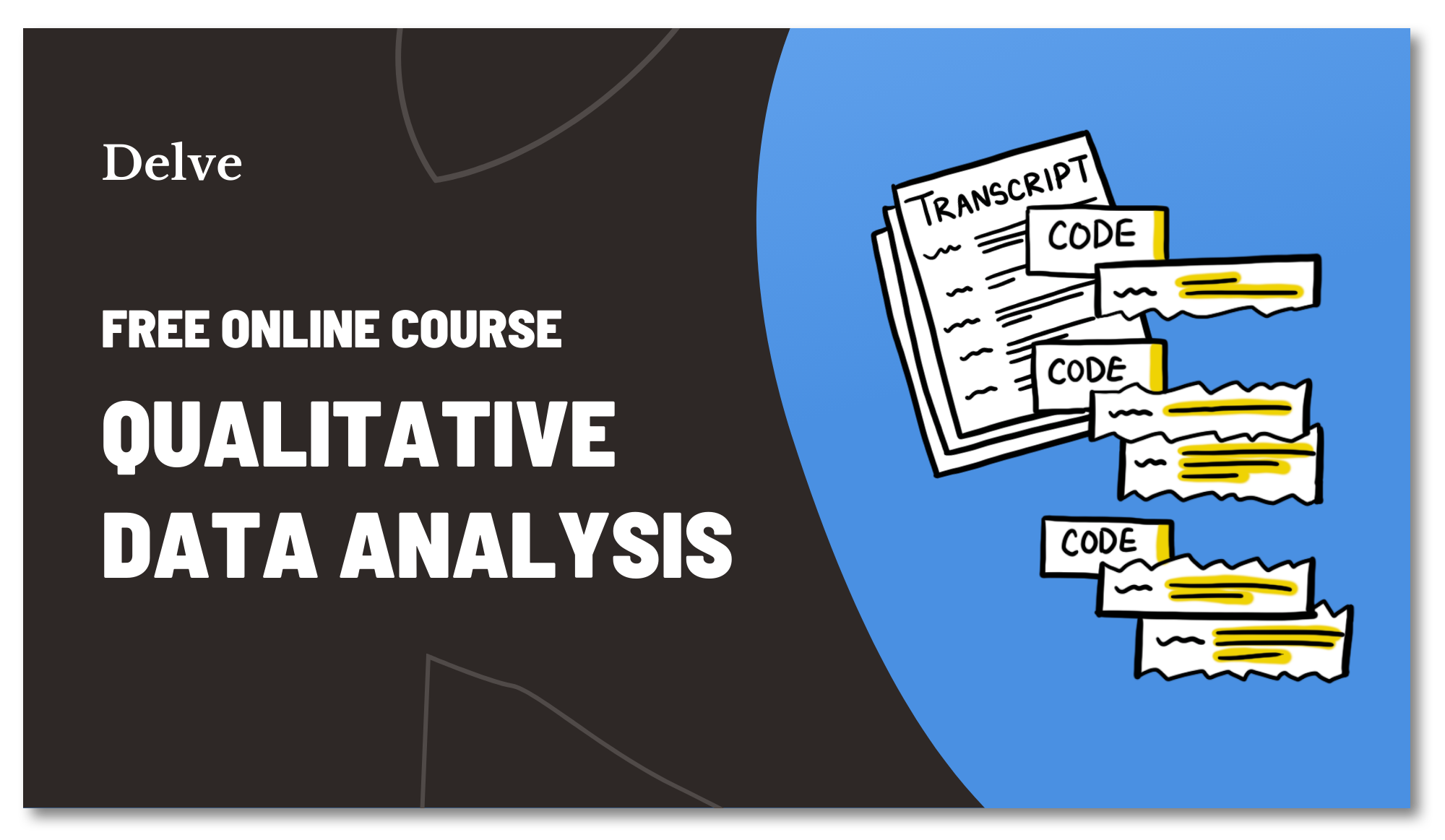

Step by Step Data Analysis Guides
There are various styles of qualitative data analysis that you can choose based on your research goals. Here are some step by step guides.
Process coding is helpful when you want to understand actions in the data. You can catalogue observable activities or conceptual actions.
Descriptive coding is where you code passages according to topic in order to summarize the topic of the data.
This article covers all things line-by-line coding, shedding light on how this method works and providing a step-by-step guide to the process.
Abductive coding helps researchers move between theory and data to uncover new insights. See how it works in practice and how tools like Delve support the process.
Thematic analysis involves reading through a data set and identifying patterns in meaning across the data.
Open coding, axial coding, and selective coding are all steps in the grounded theory method of analyzing qualitative data.
Discourse analysis is a qualitative research method that goes beyond analyzing words and sentences, establishing a deeper context about how language is used to engage in actions and form social identity.
Learn how to conduct collaborative qualitative research with online coding tools for effective researcher triangulation, peer debriefing, and intercoder reliability.
Interpretive Phenomenological Analysis (IPA) is a qualitative research methodology that explores how individuals make sense of their experiences.
Mixed methods research is the combination and integration of the components of qualitative and quantitative research methods in a single study.
Qualitative phenomenological research design is a qualitative research technique that seeks to understand the essence of a phenomenon by studying lived experiences at a conscious level.
Program evaluation is the systematic assessment of a program to determine the extent to which it achieves its intended goals and objectives.
Participatory Action Research (PAR) is an approach to research involving researchers and participants collaborating to understand social issues and promote positive change.
Researchers use narrative analysis to understand how research participants construct story and narrative from their own personal experience.
Directed content analysis (DQICA) is a deductive approach to qualitative analysis where you start with an existing theory or framework and utilize data to either support or build upon that framework.
Learn About Grounded Theory Analysis
Learn how to discover new theories based on the collection and analysis of real world data. Read our guide on grounded theory analysis.


Qualitative Grounded Theory with Examples
We explain grounded theory, a research methodology where data collection and analysis happen together in cycles.
Find connections between ideas in your research using axial coding. Read more for a step by step example of the qualitative analysis method of axial coding.
Open coding, axial coding, and selective coding are all steps in the grounded theory method of analyzing qualitative data.
Initial coding is where you break down your qualitative data into discrete excerpts and create codes to label them with.
Exploring the differences between grounded theory and qualitative content analysis helps you choose the right approach for your research.
Grounded theory and thematic analysis are two popular qualitative research methods. This article explores the strengths, differences and uses cases of these two methods.
Theoretical saturation is the point in grounded theory analysis where collecting and analyzing additional data does not teach you more about your topic. Learn more about theoretical saturation.
Constant comparative method is a process or sorting and organizing data into groups in a structured way to formulate a new grounded theory.
The history of grounded theory can be traced to the mid-1960s when Sociologist Barney Glaser and Anselm were working on the Awareness of Dying Study.
Analytical memos are recordings of the thoughts, ideas, and questions that come to the researcher’s mind during the research process.
Constructivist grounded theory is a qualitative research method that involves generating theories from emerging data rather than pre-existing theories.
Theoretical sampling is a way of collecting data, and deciding what data to collect based on the theory and categories that emerge from your data.

Collecting and Preparing Qualitative Data for Analysis
A codebook for qualitative research contains a list of the codes that you will use in your qualitative analysis research.
An unstructured interview is a type of interview in which the questions or the order in which they are asked are predetermined.
Qualitative data is non-numerical data that is produced from qualitative research methods. The following are examples of qualitative data that can be used for analysis in research.
A semi-structured interview is a data collection method that combines the elements of structured and unstructured interviews.
Qualitative observation is a research method in which researchers collect data using their sensory organs, eyes, nose, tongue, ear, and skin.
Qualitative Comparative Analysis (QCA) is a research methodology used in analyzing multiple cases in complex situations.
How do you write a research objective? Follow our simple how-to-guide to learn how to create your own research objectives.
When you conduct observational research, you can observe what happens in a natural setting.
After conducting interviews, you may need transcripts of your audio files in order to analyze and find insights. Here’s a chart to see various options.
Start Analyzing Your Data With Delve Qualitative Analysis Software
Online software such as Delve can help streamline how you’re coding your qualitative coding. Try a free trial.


Coding Your Qualitative Data
In vivo codes utilize the language and terminology used by the participants rather than alternative methods where codes are researcher-derived.
In vivo codes use the direct language and terminology used by the participants rather than alternative methods where codes are researcher-derived.
This article walks through modern methods for qualitative survey analysis.
We sat down with seven top coding tools to compare them based on one core question: Which software is easiest to learn and start coding with?
Process coding is helpful when you want to understand actions in the data. You can catalogue observable activities or conceptual actions.
Discover 6 practical ways AI can support your qualitative research – without replacing your analysis. Built for coders, not chatbots.
Values coding deals with labeling the values, attitudes and belief systems that are expressed by participants.
This article introduces emotion coding in qualitative research and offers a guide on using it effectively.
Descriptive coding is where you code passages according to topic in order to summarize the topic of the data.
This article covers all things line-by-line coding, shedding light on how this method works and providing a step-by-step guide to the process.
Abductive coding helps researchers move between theory and data to uncover new insights. See how it works in practice and how tools like Delve support the process.
This article covers split coding and consensus coding, used by research teams to enhance the trustworthiness of their qualitative data analysis.
Choose a deductive approach to start with predefined codes, an inductive approach to let the data guide your coding, or blend both for flexibility in your qualitative research.
Pattern coding groups qualitative data into sets, themes, and constructs.
Structural coding when you to take a large set of semi-structured data, and structure it into smaller pieces for further analysis.
Initial coding is where you break down your qualitative data into discrete excerpts and create codes to label them with.
Holistic coding is a qualitative approach to data analysis that involves assigning a single code to a data unit, such as a paragraph, transcript, or entire corpus, to capture its overall meaning. This article offers an interpretation of Saldaña's work on holistic coding and a practical guide for applying it to your research.
Magnitude coding is a coding method where researchers add an alphanumeric or symbolic code to an existing code. The magnitude code helps indicate the intensity, frequency, direction, presence, evaluative content, or absence of a characteristic within these initial codes.
Johnny Saldaña, in his book The Coding Manual for Qualitative Researchers (2012), offers a concise overview of elaborative coding. We summarize his interpretation in this article.
This article explores the differences between interpretative phenomenological analysis (IPA) and thematic analysis (TA), including these philosophical differences, techniques, situational considerations, and the possible benefits of combining them.
Simultaneous coding is a method of qualitative coding where a single excerpt of data is coded with multiple codes.

Learn About Thematic Analysis
Learn how to conduct thematic analysis
We compare NVivo, ATLAS.ti, MAXQDA, Quirkos, Taguette, Dedoose, and Delve to find tools that streamline thematic analysis.
Thematic analysis involves reading through a data set and identifying patterns in meaning across the data.
Find connections between ideas in your research using axial coding. Read more for a step by step example of the qualitative analysis method of axial coding.
Thematic analysis involves reading through a data set and identifying patterns in meaning across the data.
This article delves into inductive thematic analysis and deductive thematic analysis.
This article introduces reflexive thematic analysis (RTA) in qualitative research, a flexible yet systematic approach to thematic analysis that values the researcher’s subjectivity.
Learn how to create a codebook in thematic analysis, including best practices and tools to improve the quality of your research.
Grounded theory and thematic analysis are two popular qualitative research methods. This article explores the strengths, differences and uses cases of these two methods.
This article explores coding reliability thematic analysis, which focuses on how accurately different coders can apply the same codes to a dataset.
This article explores the differences between interpretative phenomenological analysis (IPA) and thematic analysis (TA), including these philosophical differences, techniques, situational considerations, and the possible benefits of combining them.
Collaborative thematic analysis (CTA) is a research method where a group of researchers collaboratively analyze qualitative research. This approach is similar to thematic analysis but has been adjusted to facilitate team-based analysis.
This article identifies, defines, and explains the various representations of thematic content analysis throughout the formative literature on qualitative research.
Clarifying the difference between thematic analysis and the common forms of qualitative content analysis—and offer researchers a rational way to match the purpose of their intended study with the appropriate method of data analysis.
Collaboration in Qualitative Data Analysis
Learn how to work together with others while coding qualitative data.
This article compares seven top qualitative data analysis (QDA) software programs available today.
This article covers split coding and consensus coding, used by research teams to enhance the trustworthiness of their qualitative data analysis.
Intercoder reliability ensures that when you have multiple researchers coding a set of data, that they come to the same conclusions.
Collaborative thematic analysis (CTA) is a research method where a group of researchers collaboratively analyze qualitative research. This approach is similar to thematic analysis but has been adjusted to facilitate team-based analysis.
Member checking, also called respondent validation, is a qualitative research technique where researchers and study respondents collaborate to ensure data accuracy.
Researcher triangulation in qualitative analysis uses multiple researchers to collect and analyze data.
Peer briefing is the process of working with one or more neutral, independent peers to enhance the credibility of qualitative research.
Content Analysis
Exploring the differences between grounded theory and qualitative content analysis helps you choose the right approach for your research.
Learn about ethnographic content analysis, a qualitative research method that’s ideal for digging into the more complicated parts of how societies and cultures work.
This article answers a frequent question from new researchers: Is content analysis qualitative or quantitative?
This guide introduces qualitative content analysis and covers many types of qualitative content analysis. We also provide a step-by-step guide for how to conduct qualitative content analysis.
Inductive content analysis is a flexible analytical technique to generate new theories, while deductive content analysis is a more structured method to verify or test preexisting research.
This article identifies, defines, and explains the various representations of thematic content analysis throughout the formative literature on qualitative research.
Clarifying the difference between thematic analysis and the common forms of qualitative content analysis—and offer researchers a rational way to match the purpose of their intended study with the appropriate method of data analysis.
Relational content analysis is a qualitative research method that begins by counting the frequency of a concept within textual documents in order to analyze the underlying relationships between them.
Conceptual content analysis is a qualitative research method that uses word frequency to analyze the consistency or regularity of certain notions or ideas that are represented within the text.
Summative content analysis in qualitative research involves identifying essential keywords, counting occurrences across textual sources, and then reading them over to offer a final write-up.
Conventional content analysis is an inductive approach to qualitative content analysis in which you develop codes and categories from your data instead of applying preexisting categories or theories.
Within qualitative content analysis, two of the prototypical methods of research are qualitative manifest content analysis and qualitative latent content analysis. This article explores both approaches in detail.
Evaluate Your Qualitative Coding
Intercoder reliability ensures that when you have multiple researchers coding a set of data, that they come to the same conclusions.
In qualitative analysis, bracketing is the suspension of judgment by the researcher in order to avoid their own biases from entering the study.
An analyst’s perspective or beliefs impact research outcomes, making reflexivity vital in qualitative research.
Framework analysis is a qualitative method uniquely suited for applied research. It allows researchers to explain what occurred in a specific setting.
Negative case analysis involves finding and discussing contradictory data emerging from your working hypothesis or theory.
Other Qualitative Resources
We’ll dive into citation styles, structural formats, and other formatting details, providing an overview and tips for creating effective and efficient qualitative research papers.
This article covers all things qualitative educational research, including how this approach helps improve our educational systems from the top down. We'll also show some examples of what qualitative research in education looks like in the field.
This article covers in-depth interviews in qualitative research, offers a step–by–step guide, and highlights tips and tools that can help organize the overall process.
Interpretive Phenomenological Analysis (IPA) is a qualitative research methodology that explores how individuals make sense of their experiences.
Ethnographic research is a qualitative research method that involves studying people in their natural environment to understand their culture, beliefs, and practices.
The Institutional Review Board (IRB) is a committee or group charged with reviewing human studies and protecting the rights and welfare of participants.
Symbolic interaction theory is a sociology theory that seeks to understand human conduct by focusing on symbols that help us give meaning to experiences in our life.

Comparing CAQDAS Tools
Compare the most popular qualitative coding software available today, covering learning curves, AI-assisted coding, collaborative features, and more.
We tested seven qualitative data analysis platforms already being used in classrooms to see how they handle the practical realities of teaching methodology courses.
We compare NVivo, ATLAS.ti, MAXQDA, Quirkos, Taguette, Dedoose, and Delve to find tools that streamline thematic analysis.
We compared seven of the top qualitative data analysis software options to see which tool offers the most helpful customer and software support.
This article compares seven top qualitative data analysis (QDA) software programs available today.
We sat down with seven top coding tools to compare them based on one core question: Which software is easiest to learn and start coding with?
Compare three popular QDA tools: NVivo, Quirkos, and Delve, including features, strengths, and weaknesses.
Learn about three widely used qualitative data analysis (QDA) software options: NVivo, MAXQDA, and Delve.
Learn about three widely used qualitative data analysis (QDA) software options: Dedoose, ATLAS.ti, and Delve.
Learn about three widely used qualitative data analysis (QDA) software options: ATLAS.ti, MAXQDA, and Delve.
This article compares three well-known qualitative data analysis (QDA) software options: NVivo, Dedoose, and Delve.
This article compares three popular qualitative data analysis (QDA) software options: ATLAS.ti, NVivo, and Delve.
This article explores Delve as a MAXQDA alternative that’s easy to use, affordable, and collaboration-friendly.
Dedoose is a prevalent CAQDAS (computer-assisted qualitative data analysis software) program, but it can be difficult to learn and use. In contrast, Delve CAQDAS offers a more user-friendly interface, better functionality, and enhanced customer support. This article compares the two popular coding software options.
NVivo Cloud Collaboration is an add-on module for NVivo CAQDAS (Computer-Assisted Qualitative Data Analysis). This article explores the features, benefits, limitations, and pricing of the cloud-based collaboration research tool.







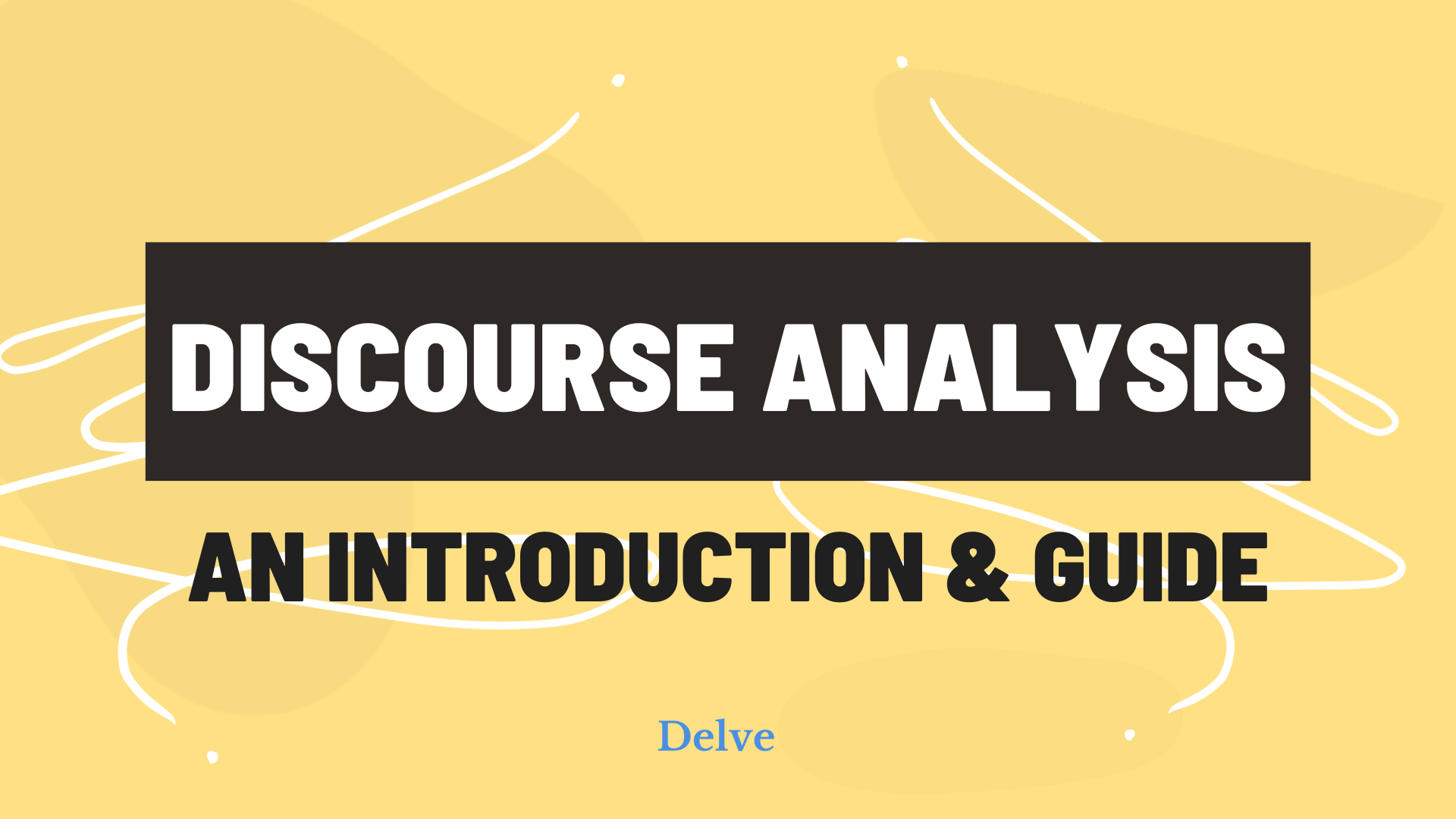




























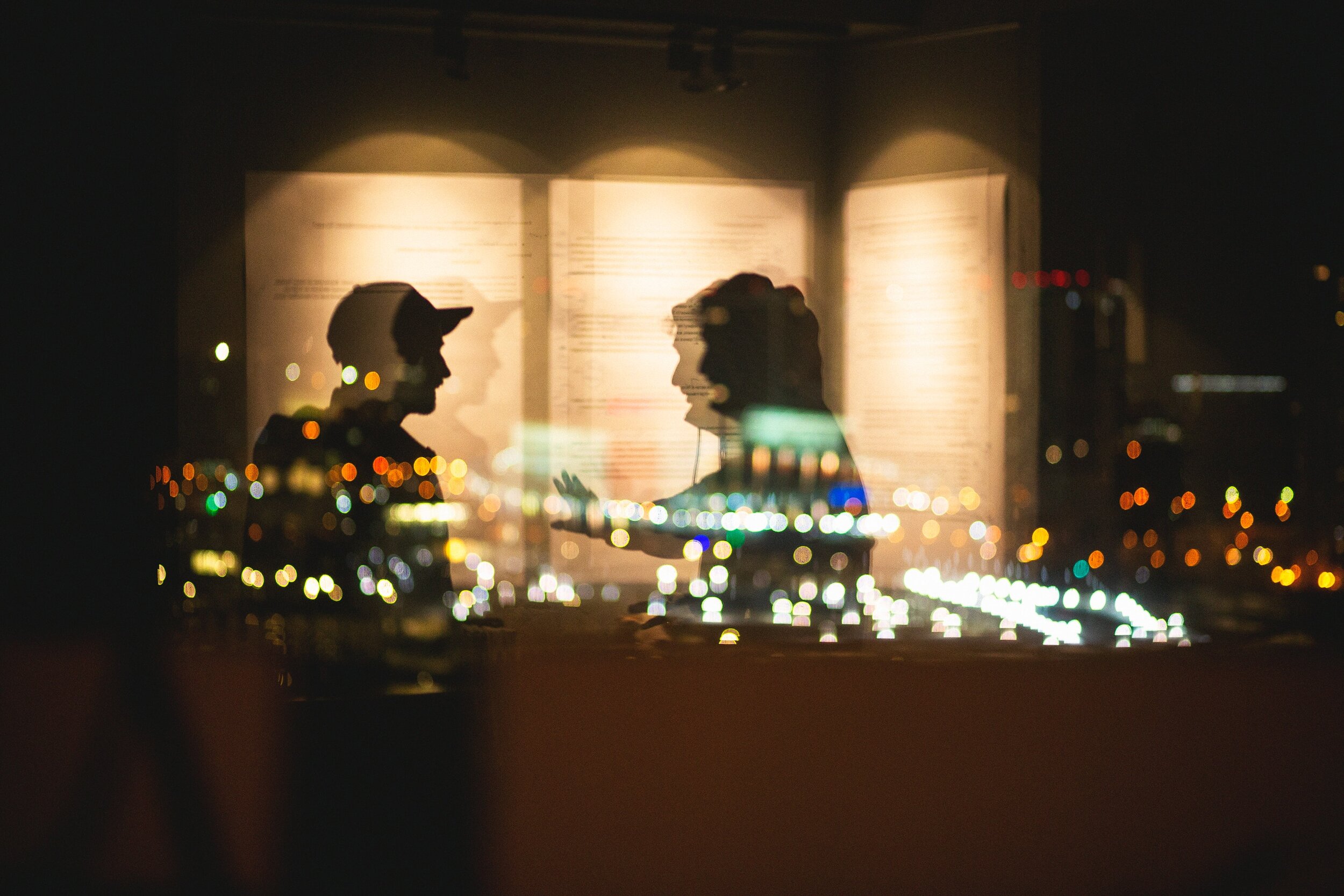


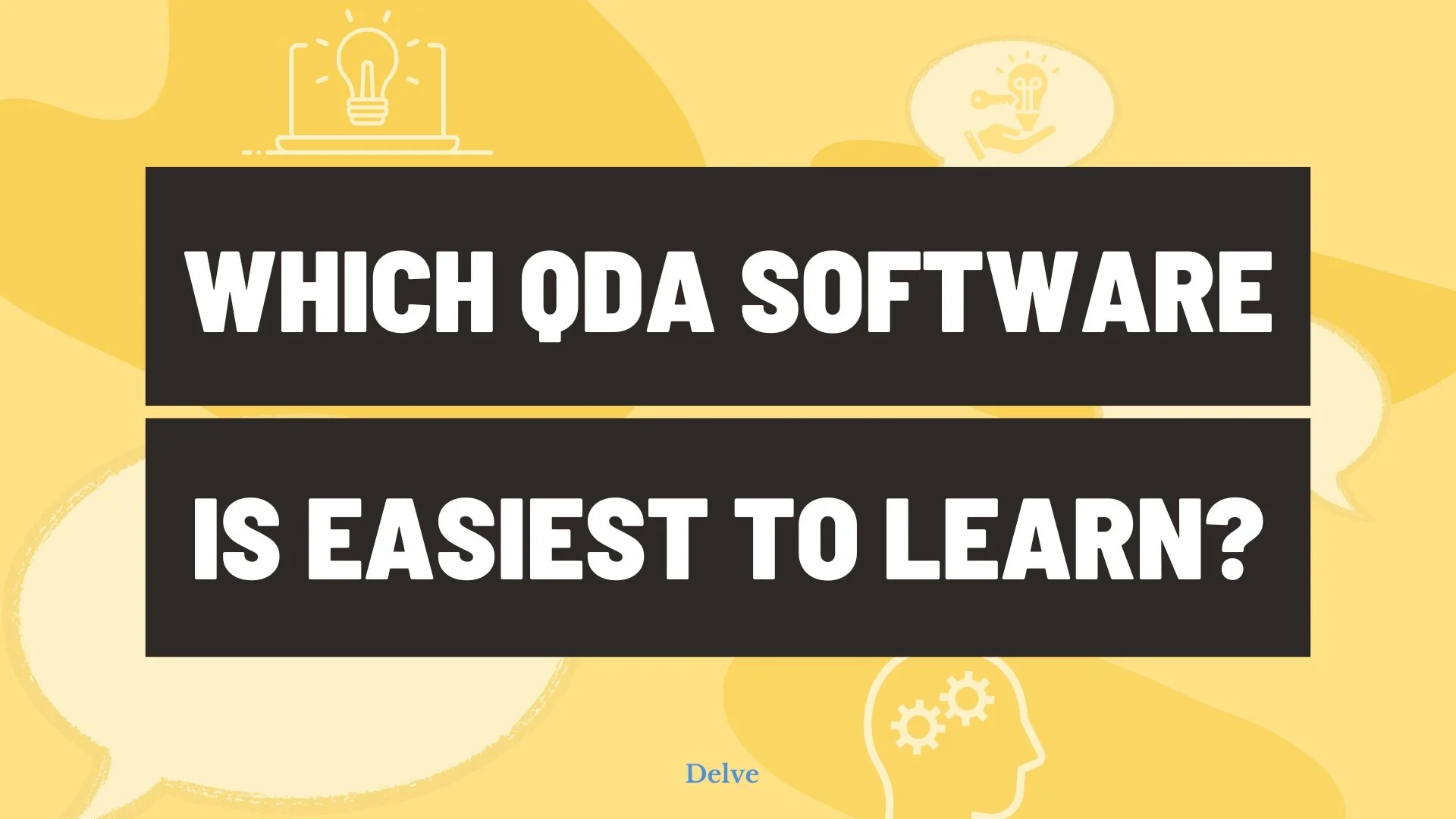



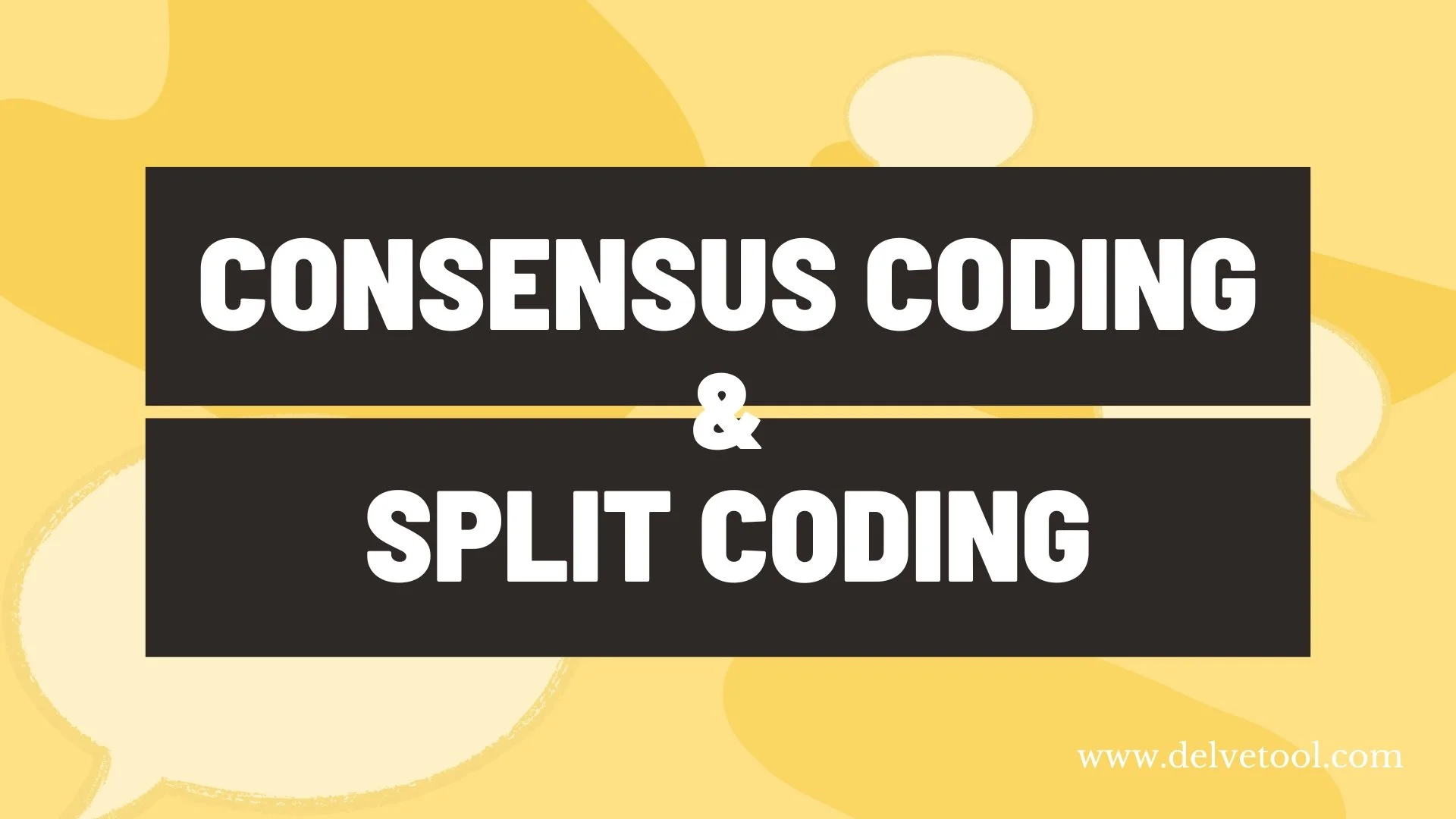








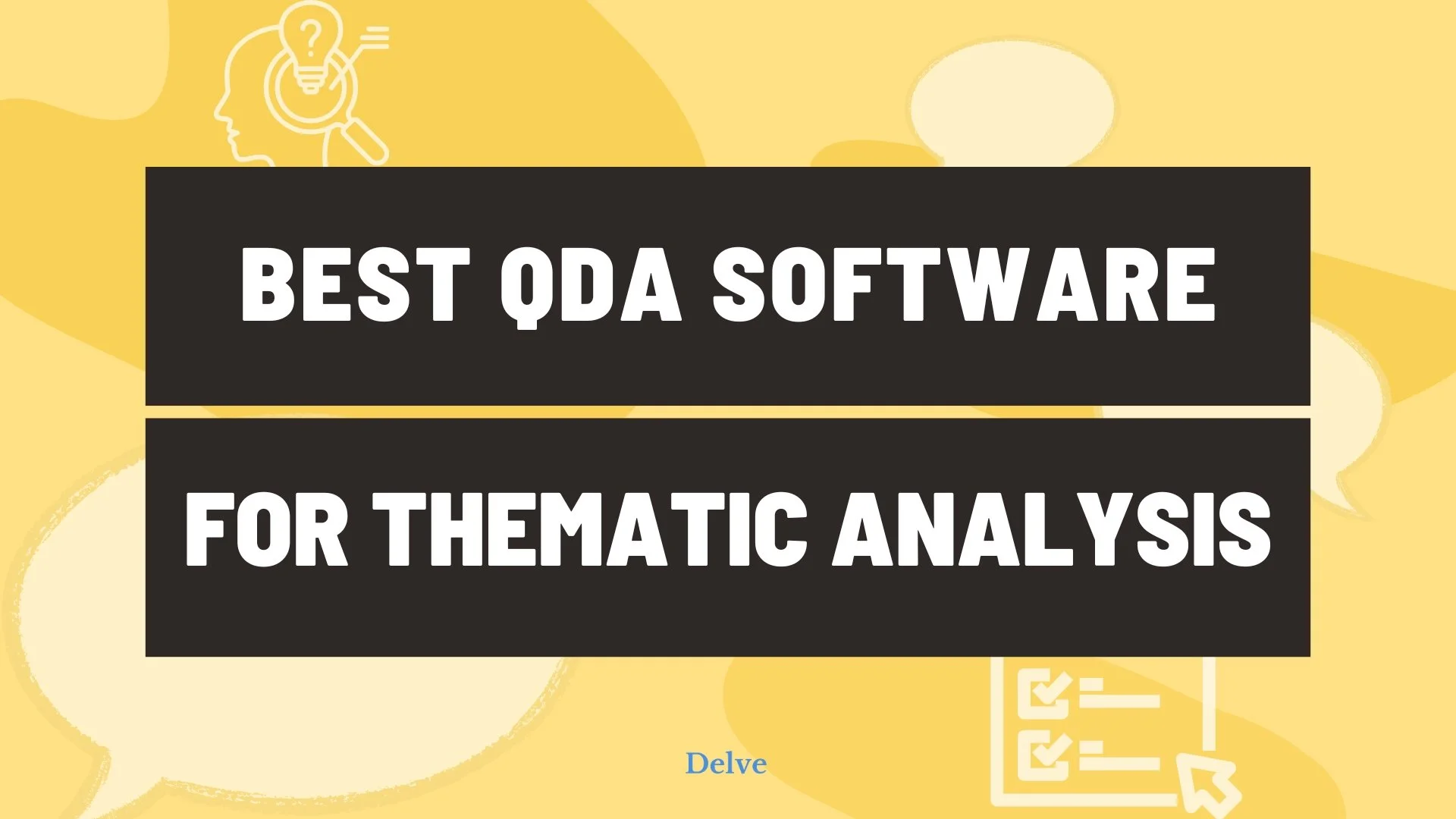








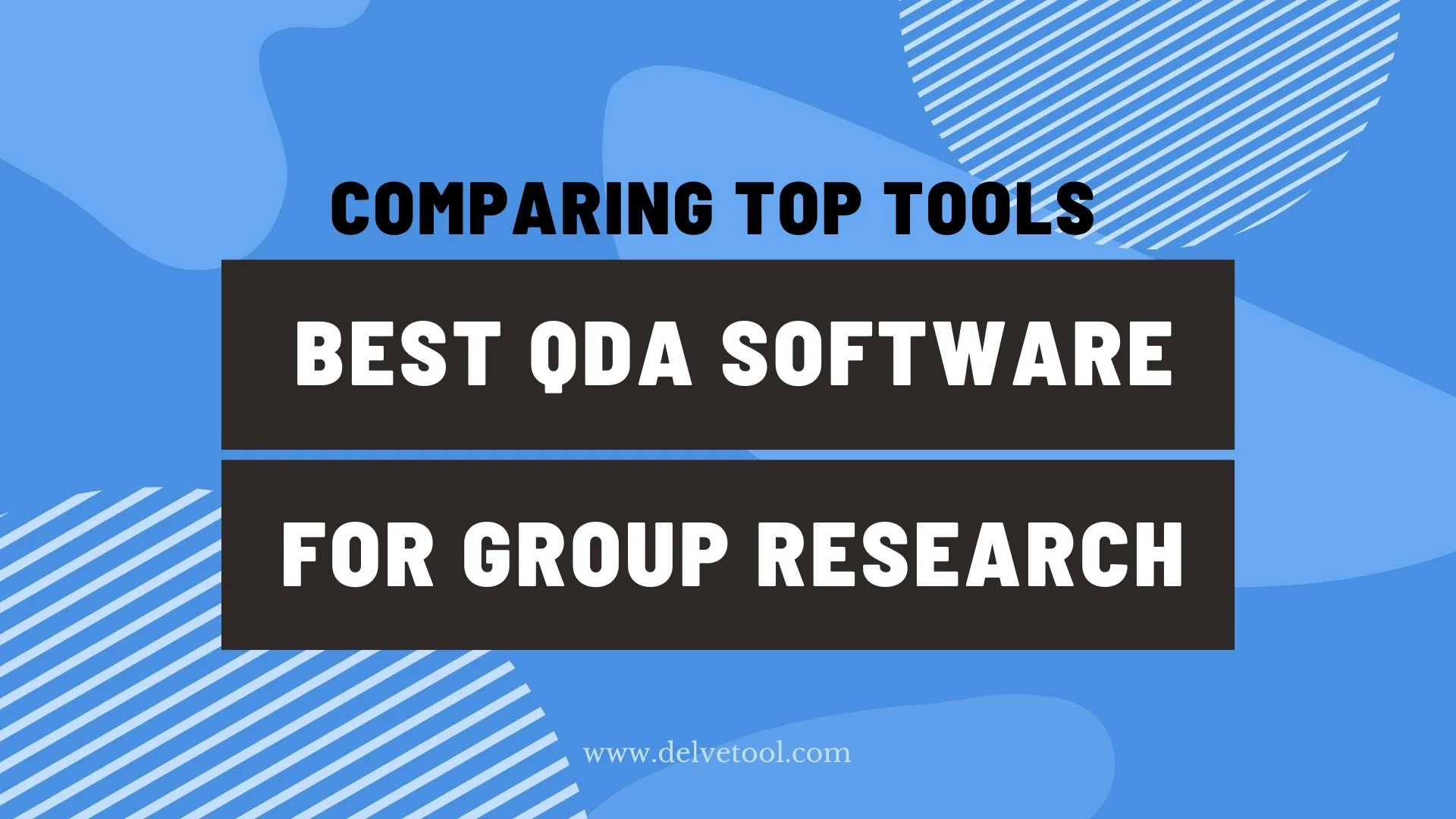






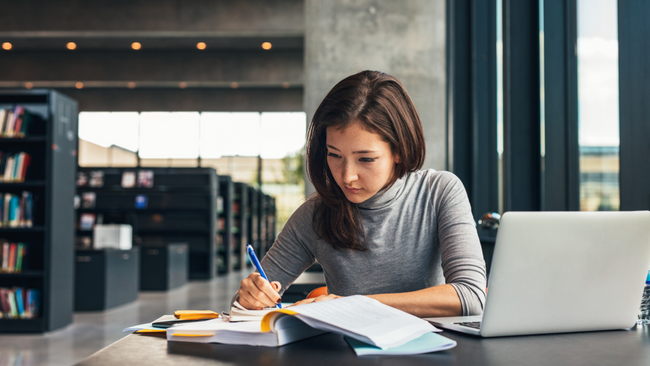

















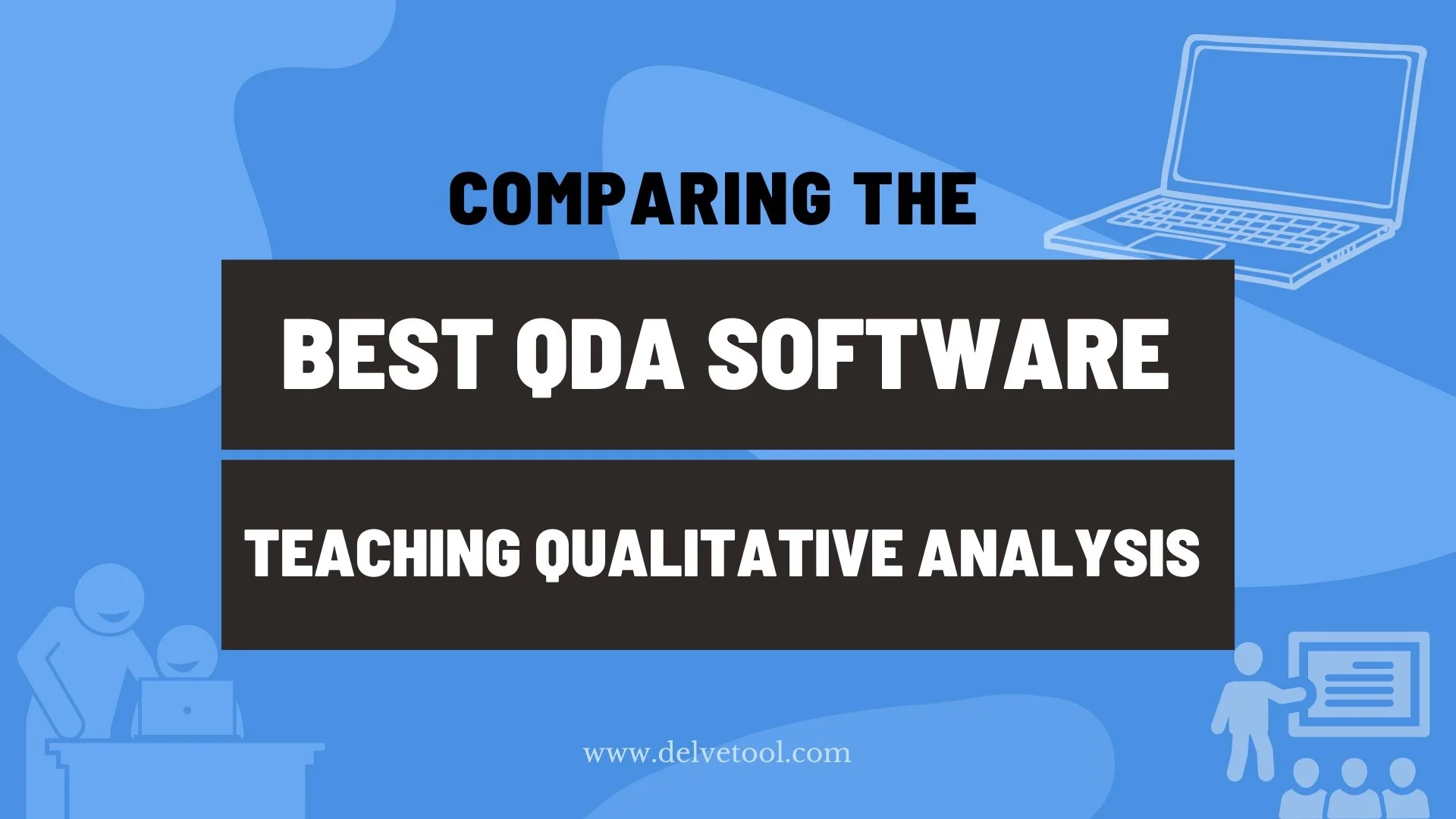
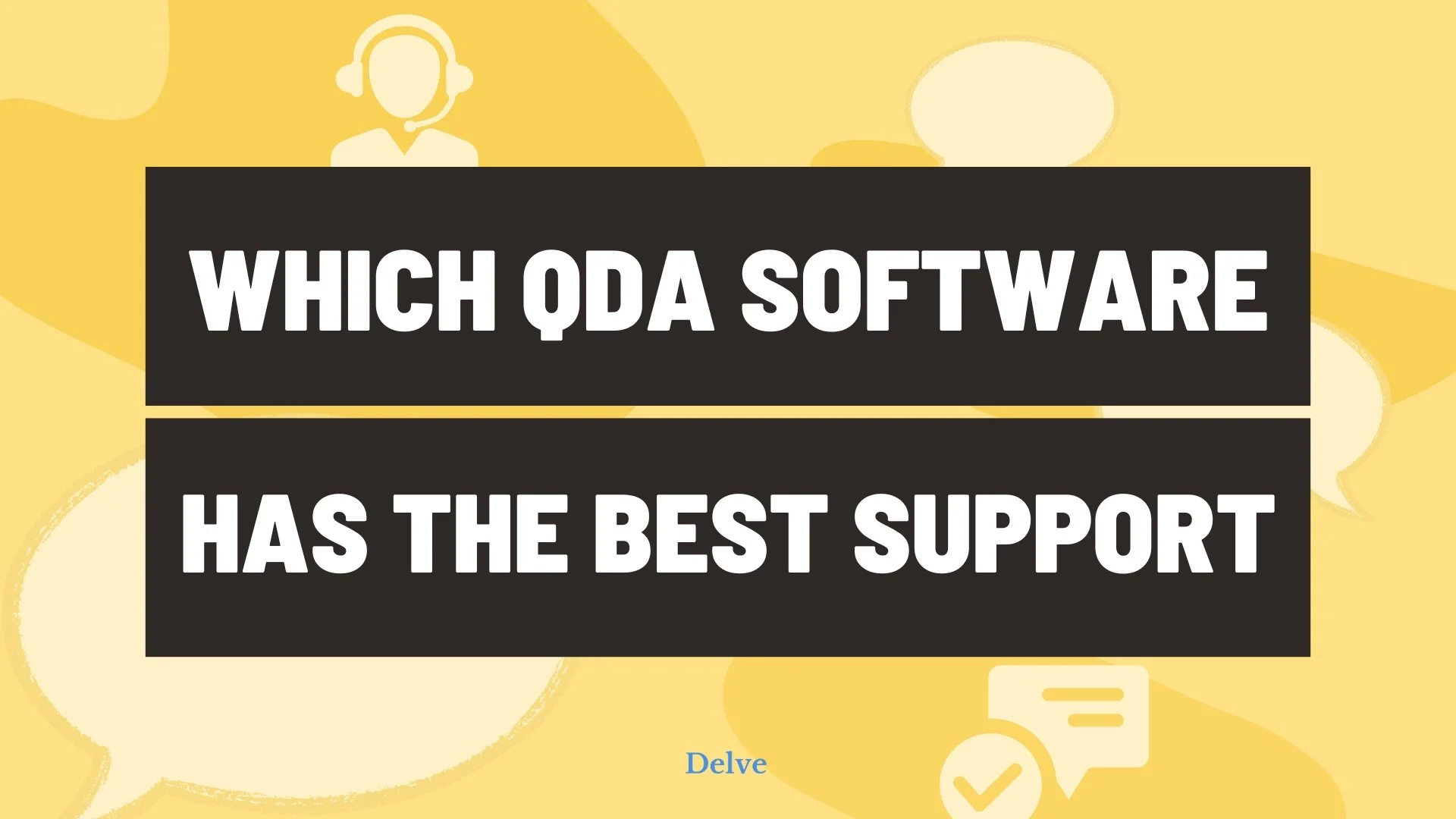




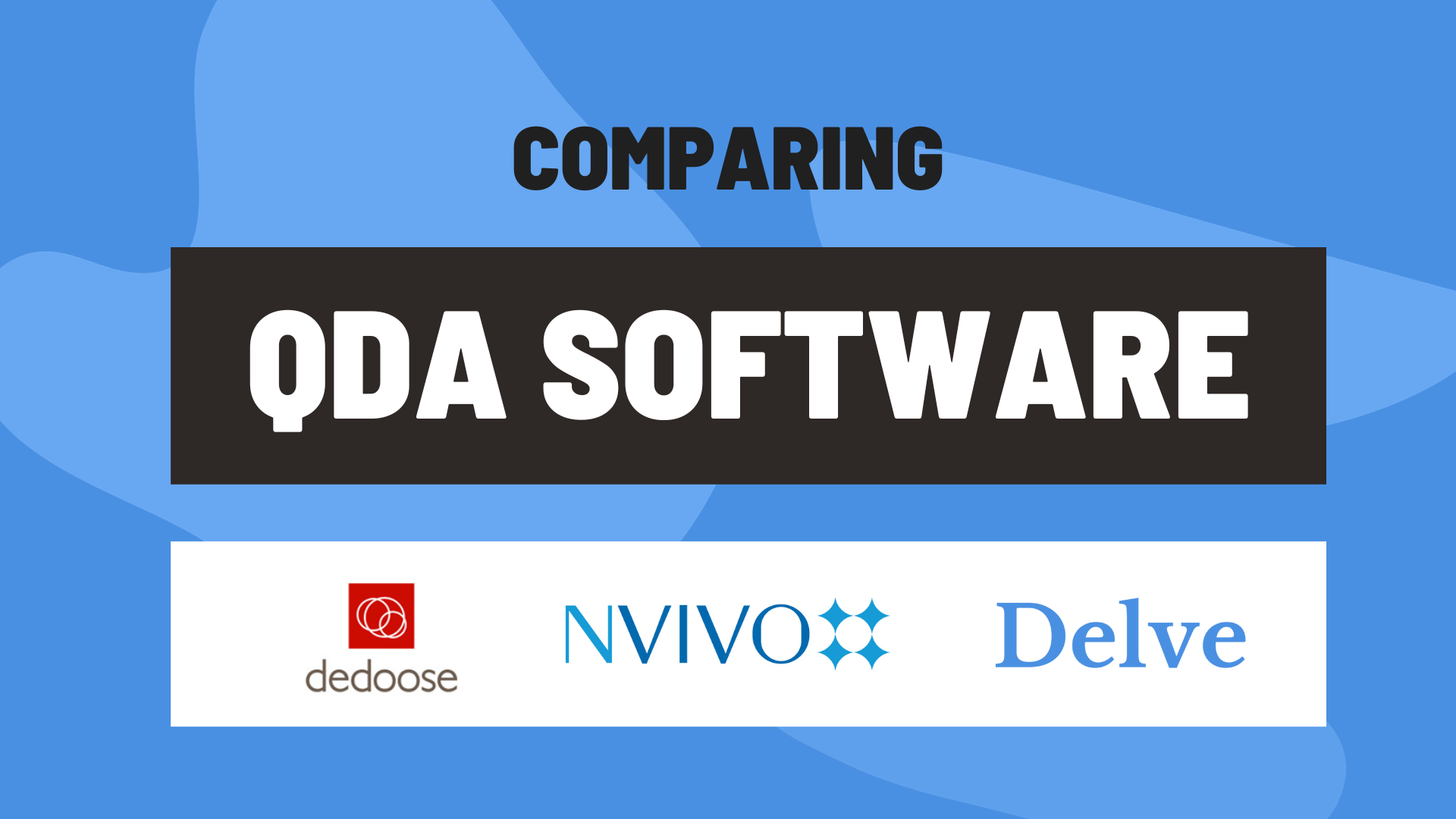




Thematic analysis involves reading through a data set and identifying patterns in meaning across the data.